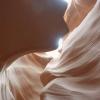- Visualizza Nuovi Contenuti
- Nikonland
- Sezioni
- Test
- Guide agli acquisti
- Indice Articoli
- Blog
- Forum
-
Fotografie
- Novità dalle Gallerie Fotografiche di Nikonland
- Una foto soltanto : Consigli & Critiche
- Ultime Immagini Caricate
- Ultimi Commenti
- _____________________________
- Contest e occasioni speciali di Nikonland
- Natura
- Fiori
- Ritratto
- Nudo
- Street
- Motori (auto e moto)
- Paesaggi e Panorami
- Architetture
- Viaggi e reportage di viaggio
- Sport (no motori)
- Vendo e Compro
- Downloads
-
Altro

Benvenuti su Nikonland Questo sito è indipendente, è autofinanziato, non promuove e non raccoglie pubblicità. Non è collegato con Nikon, Nital o le loro sussidiarie
Nikonland non è una rivista periodica e non è quindi sottoposta alla normativa vigente
Ultimi Test
-
 Panasonic Lumix DC- GH5: changing photography
Panasonic Lumix DC- GH5: changing photographyMax Aquila - gen 04 2018 17:26
-
 Sony Vario Sonnar 2,8/24-70 ZA SSM II: lo Zeiss...
Sony Vario Sonnar 2,8/24-70 ZA SSM II: lo Zeiss...Max Aquila - ago 08 2017 10:39
-
 Nikon 24-70mm F2.8E VR (test/prova)
Nikon 24-70mm F2.8E VR (test/prova)Lieve - ago 02 2017 16:25
-
 Nikon D7500 o Nikon D500 : quale scegliere ? (g...
Nikon D7500 o Nikon D500 : quale scegliere ? (g...Lieve - ago 01 2017 12:38
-
 Nikon D7500 : io non ho paura ! (test/prova)
Nikon D7500 : io non ho paura ! (test/prova)Lieve - ago 01 2017 13:59
Altri Contributi
-
 [libro Nikonland centenario] Il Terzo Occhio
[libro Nikonland centenario] Il Terzo OcchioAlberto Coppola - ago 17 2017 15:43
-
 [reportage] Non è più strano... il Tai Chi Chuan nei Parchi a Milano.
[reportage] Non è più strano... il Tai Chi Chuan nei Parchi a Milano.Silvio Renesto - ago 05 2017 13:16
-
 100 anni di Nikon il mito intramontabile
100 anni di Nikon il mito intramontabileRoby C - ago 04 2017 14:49
-
 01-09-2017 - Pravo dopo quarant'anni cambia sede
01-09-2017 - Pravo dopo quarant'anni cambia sedeRoby C - ago 02 2017 17:08
-
 31 luglio 1954... e uno che diverrà un famoso nikonista...
31 luglio 1954... e uno che diverrà un famoso nikonista...Roby C - lug 31 2017 18:48
-
 la Vera Storia della Riunione del 29 Luglio...
la Vera Storia della Riunione del 29 Luglio...Roby C - lug 30 2017 22:46
-
 Sardegna - Sud Est
Sardegna - Sud Estcris7 - lug 24 2017 19:27
-
 Avignone - Il festival off
Avignone - Il festival offMassimo Vignoli - lug 18 2017 21:59
-
 [editoriale] Garanzia cinqueminuti...
[editoriale] Garanzia cinqueminuti...Max Aquila - lug 12 2017 12:21
-
 [motori] Monza Historic
[motori] Monza HistoricGiannantonio - lug 06 2017 13:39
-
 [libro Nikonland centenario] だいすきニコン (daisuki Nikon)
[libro Nikonland centenario] だいすきニコン (daisuki Nikon)Alberto73 - lug 04 2017 21:52
-
 [manifestazioni] TRATTA 29 giugno 2017
[manifestazioni] TRATTA 29 giugno 2017tommowok - giu 30 2017 13:23
-
 [luoghi] i laghi del Trentino
[luoghi] i laghi del TrentinoAlberto73 - giu 29 2017 21:13
-
 [reportage] Tre Torri
[reportage] Tre TorriGiannantonio - giu 28 2017 15:46
-
 [Nikonland libro Centenario] come da tag
[Nikonland libro Centenario] come da tagValerio Brùstia - giu 26 2017 00:06
In evidenza
-
 Le Nikon del 2017
Le Nikon del 2017Lieve - feb 08 2017 08:36
-
 16 ottobre - 2006-2016 : dieci anni della nostr...
16 ottobre - 2006-2016 : dieci anni della nostr...Lieve - ott 16 2016 06:03
-
 La Stampa in Bianco e Nero
La Stampa in Bianco e NeroSpinoza - mag 19 2016 19:55
-
 Nikon D5 : semper fidelis (test/prova)
Nikon D5 : semper fidelis (test/prova)Lieve - ott 30 2016 17:17
-
 La nascita di Nikon (Nippon Kogaku) e la Marina...
La nascita di Nikon (Nippon Kogaku) e la Marina...Lieve - mar 04 2015 11:11
-
 Nikon D810 : la terra promessa (test/prova)
Nikon D810 : la terra promessa (test/prova)Lieve - mar 10 2015 13:50
-
 Il fascino intramontabile delle foto stampate
Il fascino intramontabile delle foto stampateLieve - mag 22 2014 09:23
-
 Calibrare e Profilare il monitor. Guida pratica
Calibrare e Profilare il monitor. Guida praticaSpinoza - mag 13 2014 12:57
Ultime News
-
 25 luglio 2017 : fine della ricreazione
25 luglio 2017 : fine della ricreazioneLieve - lug 28 2017 11:02
-
 La Nikon D850 ha un mirino ibrido ?
La Nikon D850 ha un mirino ibrido ?Lieve - lug 27 2017 05:40
-
 Importante aggiornamento firmware per la Nikon...
Importante aggiornamento firmware per la Nikon...Lieve - lug 12 2017 07:50
-
 Nuovo Nikon AF-P 70-300mm F4.5-5.6E VR (FX)
Nuovo Nikon AF-P 70-300mm F4.5-5.6E VR (FX)Lieve - lug 11 2017 07:28
-
 New Old Camera : servizio 'demo' e Meet...
New Old Camera : servizio 'demo' e Meet...Lieve - giu 12 2017 07:41
-
 Nuovo Nikon 10-20mm F4.5-5.6 VR
Nuovo Nikon 10-20mm F4.5-5.6 VRLieve - lug 07 2017 16:49
-
 Nuovo Nikon 8-15mm F3.5-4.5E Fisheye
Nuovo Nikon 8-15mm F3.5-4.5E FisheyeLieve - mag 31 2017 07:23
-
 Nuovo Nikon 28mm F1.4E
Nuovo Nikon 28mm F1.4ELieve - mag 31 2017 07:36
-
 Fotografia, messaggi, il tempo in cui viviamo.
Fotografia, messaggi, il tempo in cui viviamo.Lieve - giu 25 2017 05:35
-
 Il dado è tratto. Sarà il 2018 l'anno mirro...
Il dado è tratto. Sarà il 2018 l'anno mirro...Lieve - lug 12 2017 07:15
Sigma 18-35 mm f1.8 lo zoom DX professionale
apr 18 2013 08:16 |
Kintaro70
in News dal mondo fotografico



Fa parte della linea ART proprio come il 35mm 1.4, questo farebbe pensare ad un obiettivo che privilegia le prestazioni, e solo su formato APSC, ma indica la chiara intenzione di Sigma nel voler coprire tutti i segmenti abbandonati dai produttori principali, in questo caso gli zoom ad alte prestazioni per APSC.
Lo schema ottico

la messa a fuoco

Vignettatura

Distorsione

MTF

Un po di specifiche:
17 lenti in 12 gruppi
passo filtri 72 mm
angolo di campo 76.5° - 44.2°
Minima distanza di messa a fuoco : 28cm
Dimensioni : 78x 121mm
diaframma a 9 lamelle
rapporto di ingrandimento 1:4.3
peso 810g
Comunicato stampa :
RONKONKOMA, NY, Apr. 18, 2013 — Sigma Corporation of America , a leading researcher, developer, manufacturer and service provider for some of the world's most impressive lines of lenses, cameras and flashes, today announced the Sigma 18-35mm F1.8 DC HSM Art lens, the market’s first zoom lens to achieve a maximum aperture F1.8 throughout the entire zoom range.
This revolutionary, wide aperture, standard zoom lens is created for DSLR cameras with APS-C size sensors, which translates to a focal range of 27-52.5mm on a 35mm camera. With a minimum focusing distance of 11 inches, and a maximum magnification ratio of 1:4.3, the 18-35mm is ideal for landscapes, portraits, still-life, studio, close-up and casual photography.
"Exceptionally fast apertures were previously unavailable in zoom lenses, so photographers turned to several prime lenses in a session to get bright images at various focal lengths. We're incredibly excited to be the first manufacturer to bring the F1.8 standard zoom to the market and to provide photographers with a new level of creativity and convenience, with the outstanding image quality at the core of the new Sigma Global Vision," said Mark Amir-Hamzeh, president of Sigma Corporation of America.
Amir-Hamzeh added that because developing a large aperture wide angle zoom lens can prove to be technologically and optically challenging, often resulting in various distortions, aberrations and field curvature, Sigma has tapped into its long history as a lens pioneer to overcome those issues in this new generation lens.
"Our experience with the wide angle designs of our 12-24mm F4.5-5.6 II DG HSM and our 8-16mm F4.5-5.6 DC HSM, and our research and development in our Aizu factory have prepared us for this technological advancement,” he said. “Our wide, glass-molded aspherical lens and the incorporation of Special Low Dispersion (SLD) glass have optimized power distribution of the optical elements and compensated for various aberrations, as well as curvature of field at the widest angle. We’re extremely proud of this achievement."
The 18-35mm is the latest addition to the company’s company’s Art line of lenses, designed under the new Global Vision. The Global Vision lenses have a sleek new design with the manufacturing year stamped on the barrel, and are categorized by use into one of three groups: Art, Contemporary and Sports. The Art category delivers high-level artistic expression through sophisticated and abundant expressive power.
The new 18-35mm lens incorporates Sigma’s improved AF/MF switch and the use of Thermally Stable Composite (TSC) compound material, which has a high affinity to metal parts, consistently performs well at extreme temperatures, and reduces the size and weight of the lens. It is also compatible with Sigma’s new USB Dock, which will be available in coming months, enabling photographers to update lens firmware and adjust focus parameters from their computers.
Convenient handling is achieved with internal focusing and zooming, which prevents changes to the size of the lens. Additionally, the front part of the lens does not rotate, so special filters like circular polarizers can be used.
The 18-35mm lens’ Super Multi-Layer Coating reduces flare and ghosting and provides sharp and high contrast images, even in backlit conditions. The petal-type hood that is supplied with the lens will provide extra protection from flare and ghosting. Sigma’s Hyper Sonic Motor (HSM) ensures a silent, high-speed AF function and the optimized auto focus algorithm results in smooth focusing and full-time manual focusing capability. Lastly, the nine-blade, rounded diaphragm creates an attractive, round bokeh at large-aperture settings.
1 user(s) are online (in the past 15 minutes)
0 utenti, 1 ospiti, 0 utenti anonimi













52 Comments
Considieriamo anche che Sigma ha tirato fuori questo zoom, che ci aspettiamo di buona qualitá, e fissi a circa 50-60% del prezzo degli originali.
Prezzo comunque alto in generale.
Per essere davvero competitivo con uno zoom f2.8 Nikon o Canon, uno zoom marchiato Sigma non dovrebbe costare piú di 700€ ed essere tutto di metallo... Cosa davvero impossibile.
Per mille Euro o giú di lí, non c'é nessuna ragione per prendere un Sigma (o un Tamron, VC o non VC) al posto di un Niko o Canon usati o della generazione precedente a meno ancora.
Per essere competitivi, occorre fare qualcosa di realmente competitivo. Ed uno zoom f2.8 non puó esserlo.
Sia che si parli del 24-70, sia che si parli del 70-200.
I fissi invece hanno uno spazio tutto per loro da poter occupare, complice anche i prezzo davvero assurdi delle novitá di casa Nikon.
Sigma se ne é accorta, ed ha riempito egregiamente questo spazio.
Dubito vada ad insidiare Nikon e Canon dove sa di non poter vincere.
a_
Aspettiamoci altri fissi e nuovi supertele allora.
PS (perdonate l'ennesimo OT)
Come dice Andre competere con Canon e Nikon nel campo "triade", per intenderci, è pressochè infruttuoso o comunque di scarso interesse commerciale. Ma Tamron, probabilmente sbagliando, lo ha fatto ed ha messo in commercio un 24-70 ed un 70-200 entrambi 2.8 VC USD (stabilizzato e ultrasonico) rispettivamente a 850€ e 1.240€ (prezzi recuperati dalla rete con garanzia Europa). Dunque, nessuno li ha mai visti in azione? Ne hanno venduto qualcuno in Italia?